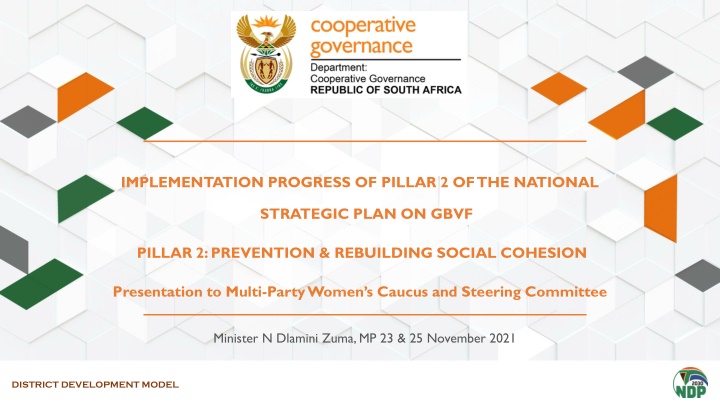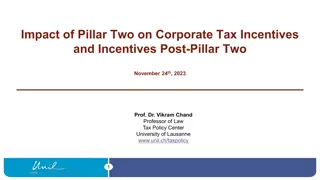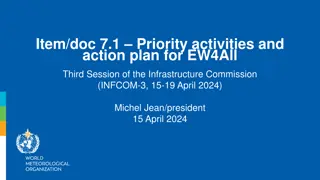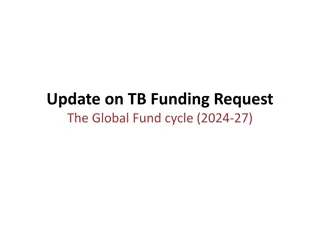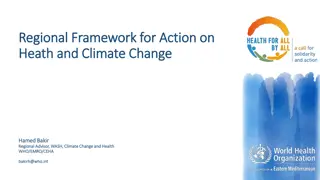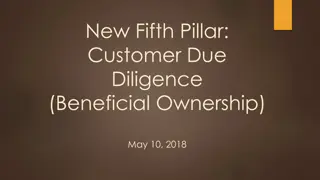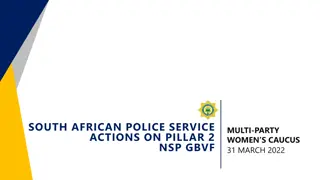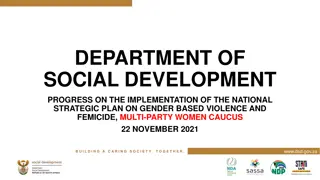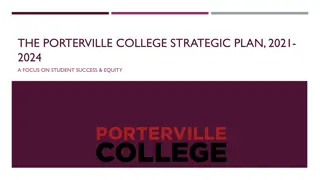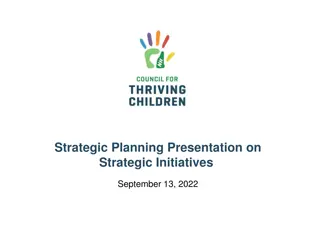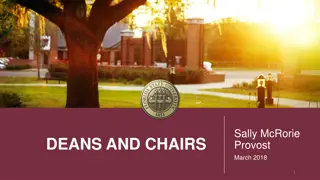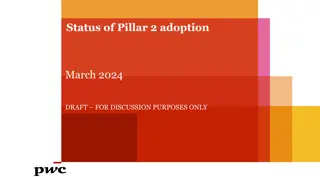Progress Update on Pillar 2 of the National Strategic Plan on GBVF
This presentation highlights the progress made in implementing Pillar 2 of the National Strategic Plan on Gender-Based Violence and Femicide (GBVF). It focuses on prevention strategies and rebuilding social cohesion, aligning with national priorities and utilizing the District Development Model to track and address GBVF issues effectively.
Download Presentation

Please find below an Image/Link to download the presentation.
The content on the website is provided AS IS for your information and personal use only. It may not be sold, licensed, or shared on other websites without obtaining consent from the author.If you encounter any issues during the download, it is possible that the publisher has removed the file from their server.
You are allowed to download the files provided on this website for personal or commercial use, subject to the condition that they are used lawfully. All files are the property of their respective owners.
The content on the website is provided AS IS for your information and personal use only. It may not be sold, licensed, or shared on other websites without obtaining consent from the author.
E N D
Presentation Transcript
IMPLEMENTATION PROGRESS OF PILLAR 2 OF THE NATIONAL STRATEGIC PLAN ON GBVF PILLAR 2: PREVENTION & REBUILDING SOCIAL COHESION Presentation to Multi-Party Women s Caucus and Steering Committee Minister N Dlamini Zuma, MP 23 & 25 November 2021 DISTRICT DEVELOPMENT MODEL
PURPOSE AND INTRODUCTION To present o the Multi-Party Women's Caucus and Steering Committee, progress made against Pillar 2 of the National Strategic Plan (NSP) on Gender Based Violence and Femicide (GBVF). The Department has formed good relations with the Department of Women, Youth and Persons living with Disabilities (DWYPD) , and we have started to report progress consistently on a monthly basis to DWYPD. We have recently revised our Vision: Efficient & effective cooperative governance system that enables resilient, safe, sustainable, prosperous, cohesive, connected and climate smart communities. 2 DISTRICT DEVELOPMENT MODEL
ALIGNMENT TO NATIONAL PRIORITIES DCoG Strategic Plan Fostering social cohesion and safe communities through ensuring inclusive and gender mainstreamed budgets based on the needs and aspirations of communities Priority 6 MTSF Social Cohesion and Safe Communities NSP- GBVF PILLAR 1 Accountability, Coordination and Leadership NSP- GBVF Pillar 2 Prevention & Rebuilding Social Cohesion District Development Model The DDM Implementation Framework is updated to include the GBVF indicators based on the NSP on GBVF in collaboration with the DWPD Ministers Agreement- Promote effective functionality of mechanisms to support the multi-sectoral approach to dealing with GBVF Monitor and support the integration of GBVF NSP targets into the delivery of IDPs Provincial alignment Provincial APPs include and monitor the indicator Number of Municipalities monitored on the implementation of GBVF responsive programmes 3 DISTRICT DEVELOPMENT MODEL
Progress Tackling GBVF though DDM The DDM Implementation Framework is updated to include the GBVF indicators based on the NSP on GBVF in collaboration with the DWPD . DCoG APP The DCOG APP incorporates GBVF indicators and targets based on the NSP into the DDM Framework Tackling GBVF though DDM Localizing GBVF Localizing GBVF Provincial APPs include and monitor the indicator Number of Municipalities monitored on the implementation of GBVF responsive programmes Disaggregate beneficiaries APP of DCoG Disaggregates beneficiaries Target for Women: 55% of participants, Target for Youth: 55%, Target for Persons with Disabilities: 02% . Disaggregate beneficiaries Partnerships LG indicators for Metros- B-BBEE Procurement Spend on Empowering Suppliers that are at least 30% black women owned Partnerships GBVF - GovChat Partnered with the DWPD & conducted workshops with municipalities across all 9 Provinces on the mainstreaming of the GBVF into the Municipal IDP. GBVF feature on the GovChat App A total of 751 (51 in Sep) GBVF issues have been reported on the platform, and 130 (9 in Sep) of those relating to domestic violence, 52 of physical abuse and 99 of abandoned children.
Progress Continued The mainstreaming of GBVF into the IDPs is part of ensuring that Municipalities considerpartners and allocate resources when developing the Service Delivery Budget Implementation Plans (SDBIP) Training of ward committee on GBVF will resume after the new ward committees have been established post 2021 Local Government Elections. GBVF Capacity Building & Mentorship for Gender Focal Points were rolled out by Office of the Premier (Status of Women & Children) in partnership with the United Nations Population Fund (UNFPA) for eThekwini (5-7 October) & Ugu (12-14 October). This training has been extended to CDWs and Traditional Leaders. There are joint COGTA-UN extensive consultations in the three pilot districts in support of the implementation of the District Development Model (DDM) to understand their development priorities. The partnership has identified specific areas of support that the UN can provide to the districts, The partnership has developed district-specific implementation plans based on three interrelated pillars. These include the Unlocking Economic Value Chains pillar, which will provide opportunities for inclusive and sustainable growth and the Social transformation pillar, which is intended to result in increased stakeholder commitment CWP trained participants on GBVF and child welfare, and run programmes across all provinces that encourages youth to stay away from alcohol and drug abuse which are regarded as some of the main cause of GBVF. 6 DISTRICT DEVELOPMENT MODEL
POLICIES IN PLACE TO DRIVE GBVF The focus of the internal GBVF programme is on implementation of the Head of Departments 8 Principles Action Plan for Promoting Women Empowerment and Gender Equality. It draws its mandate from the Constitution of the Republic of South Africa and Public Service Gender Equality Strategic Framework in the Public Service Employment Equity Policy and Plan Sexual Harassment Policy Disability Policy Wellness Management Policy Driving the Fight against GBVF Recruitment and selection Policy HIV & AIDS Policy Sexual Harassment Policy Special Leave Policy 8 DISTRICT DEVELOPMENT MODEL
SMS PERCENTAGE REPRESENTATION BY LEVEL AND GENDER AS AT 20 OCTOBER 2021 120% 100% 42% 80% 54% 60% 100% 100% 40% 58% 45% 20% 0% 13 14 15 16 Male Female 9 DISTRICT DEVELOPMENT MODEL
SMS REPRESENTATION BY LEVEL AND GENDER AS AT 20 OCTOBER 2021 LEVELS 13 14 15 16 Male 34 14 3 0 % Female 40 10 0 1 % 54% 42% 0% 100% TOTAL 74 24 3 1 45% 58% 100% 0% The total number of officials in the establishment is 435. Male is 195 (44.83%) Female is 240 (55.17%) SMS Representation A 50 % representation of Women SMS has been achieved however representation is saturated at the entry level 13. 10 DISTRICT DEVELOPMENT MODEL
UPCOMING ACTIVITIES Date of Activity 24 November 2021 16 Days of Activism Activity Objective Awareness raising Against women and Children 01 December 2021 World AIDS day Awareness raising 03 December 2021 International Day for persons with disabilities Awareness raising 11 DISTRICT DEVELOPMENT MODEL
Role of Traditional Leaders on Fighting GBVF The Constitution recognises the role of traditional leadership in various aspects of socio-economic development initiatives. It recognises the fact that the Institution plays a pivotal role in promoting freedom, human dignity and the achievement of equality and non-sexism. Traditional leaders are the custodians of culture, customs and tradition. They also play an integral role in educating traditional communities about social ills, thus creating awareness on gender-based violence within their communities. Furthermore, they are instrumental in the promotion of human rights for vulnerable communities. The institution is further mandated to keep peace and promote unity within and among communities. Despite advances in women s rights around the world, violence against women, girls and children remains one of the most pervasive human rights abuses, and its occurrence in the home or by an intimate partner is its most prevalent form. Recently there has been an increase on domestic violence. It is true that domestic violence is a human rights violation experienced across the world, occurring across all social strata and cultural groups. 12 DISTRICT DEVELOPMENT MODEL
Role of Traditional Leaders on Fighting GBVF Traditional leaders collaborate with various stakeholders towards fighting the scourge of GBVF. This includes among others; the Department of Social Development (DSD); Commission on Gender Equality (CGE), Department of Women, Youth and Persons with Disabilities, SAPS and SANAC to mention but a few. In this regard, the National House has launched the Men s Parliament together with SANAC Men s Sector. The launch was to encourage men to fight GBVF. Provincial chapters of the Men s Parliament are also being launched. Furthermore the National House through its partnership with the Department of Social Development and the Eastern Cape House of Traditional and Khoi-San Leaders has engaged with the elderly especially those with Alzheimer regarding Gender Based Violence and Femicide. The reason to target the Alzheimer patients was because they get violated and are unable to indicate as to who violated them. In the Free State, the Queens Forum conducted a session with young people to discuss and make them aware of the dangers of being abused and violated. Furthermore, they distributed dignitary packs to the needy young girls. The NHTKL held a webinar talking about the challenges faced by women in traditional leadership especially those serving in the houses as part of ending GBVF. They discussed the role of houses in ending GBVF. 13 DISTRICT DEVELOPMENT MODEL
Role of Traditional Leaders on Fighting GBVF The NHTKL in partnership with AL-Imdaad foundation delivered dignity packs to women traditional leaders in Mpumalanga as part of curbing the spread of GBVF. The dignity packs were for girls not to ask money from males for such but be able to help themselves. Traditional leaders also undertake awareness campaigns in their communities to ensure that their communities are aware of the scourge. The launching of Men s Parliament in Kuruman at the Traditional Council of Kgosi Motswarakgole is a good example of such. In ensuring that traditional communities receive the necessary support, traditional leaders make available their traditional administration buildings as centres for support services to the affected individuals. Traditional leaders also advise government on issues and policies affecting the lives of people in their communities, including GBVF. For example they participate in formal intergovernmental structures such as the COGTA MINMEC where they are able to advise government. The Traditional and Khoi-San Leadership Act also provides that any legislation having a bearing on customary law and practices should be refereed to the National House of Traditional and Khoi-San Leader for inputs. This enables traditional leaders to have a say on legislation, including those that would be relevant to fighting GBVF 14 DISTRICT DEVELOPMENT MODEL
CONCLUSION We must intensify the fight for tougher gender-based violence laws, public awareness and access to legal protections for all women, especially the poor. We need to capitalize on the District Development Model (DDM) as a vehicle to tackling this persistent challenge. 15 DISTRICT DEVELOPMENT MODEL
